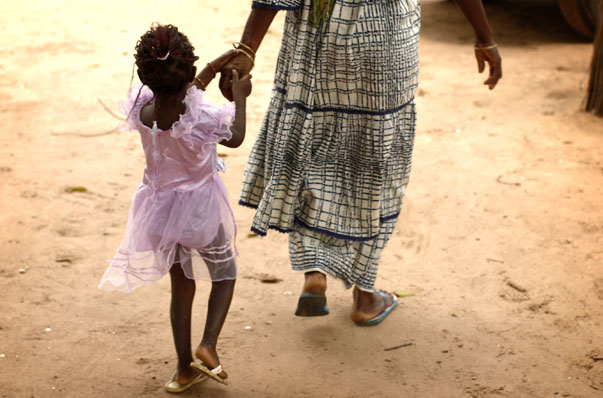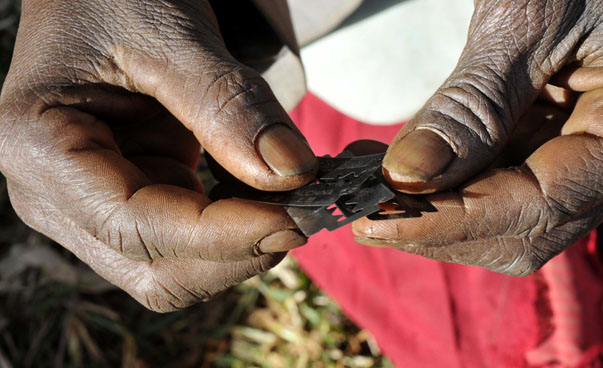“Our own research suggests that the number of women and girls living with FGM in the UK is more likely to be around 170,000 -almost three times the existing official figures – and that 65,000 girls aged 13 and under are at risk of mutilation.”
Julie Bindel, 21 January 2014
The background
A new study claims that as many as 170,000 women in Britain have experienced some kind of genital mutilation, and as many as 65,000 girls aged 13 and under could be at risk.
The painful procedure is widely practised in some parts of the world, notably Africa, despite carrying a range of serious health risks.
The first UK law banning what was widely (and inaccurately) known as “female circumcision” was passed in 1985, and it now carries a maximum penalty of 14 years in prison.
But there has not yet been a single successful prosecution, despite evidence that girls are routinely being mutilated in African communities around the country.
Do the victims already run into the hundreds of thousands, and how many girls are really at risk? FactCheck takes a look at the evidence.
The analysis
Today’s report has been written by journalist Julie Bindel for the New Culture Forum, which its founders say was set up to “challenge the discredited left/liberal cultural orthodoxy”.
The basic methodology is similar to the last major study on the prevalence female genital mutilation, funded by the Department of Health and published in 2007 by the charity FORWARD.
The authors began by finding out which countries had the highest rates of mutilation, then working out how many women and girls from those countries now live in England and Wales, using 2001 census figures as a starting point.
They found that just under 175,000 women had been born in countries where genital cutting is practised.
Then they looked at international estimates of the prevalence of the practise in those countries. Only 1.4 per cent of women from Cameroon were likely to have been harmed, rising to more than 95 per cent of women from Congo, Djibouti, Somalia and Guinea.
The researchers crunched the numbers and calculated that just under 66,000 of those 175,000 African women living in the UK were probably victims of FGM.
They totted up the number of under-15s either born in an FGM-practising country or born to a woman from one of those nations, grouped them into different risk groups and worked out that 24,012 girls were at high risk or had perhaps already been mutilated.
Ms Bindel uses a similar approach but updates the figures using bigger immigrant population estimates from the 2011 census.
In 2011 there were 406,600 women born in a country where genital cutting is practised, and the number of women likely to be living in the UK with FGM was 170,000.
She calculates that 65,000 girls under 13 living in the UK are at risk of FGM.
The new report says its headline finding of 170,000 victims in the UK is “almost three times the existing official figure”, but it’s probably unfair to compare the findings from the two studies too closely.
The 2007 report only looked at the immigrant population in England and Wales whereas the new study uses figures for the whole of the UK.
When it looks at children, the latest report uses a different age range and, as far as we can tell, a cruder measure of risk than the earlier study.
Nevertheless, if we accept that the basic concept is correct, then it’s reasonable to assume that the number of mutilated women will go up as immigration from high-risk parts of Africa rises.
Clearly, research like this will never be perfect. First we have to believe that the estimates for the country of origin, made by various international health organisations, are accurate – and some of them date back to the 1980s or ’90s.
Then, when it comes to assessing the risk of young girls of African origin being mutilated in the UK, we have to assume that immigrants will behave the same way in their new home as they did in the country of origin – that they will carry on cutting their daughters despite being exposed to very different cultural values and indeed laws.
This is up for debate, although there is some evidence that migrants’ attitudes to mutilation can change pretty quickly.
This study of Somalis in London found that “living in Britain from a younger age appears to be associated with abandonment of female circumcision and with changes in the underlying beliefs on sexuality, marriage and religion that underpin it”.
The verdict
Estimates of prevalence like this are more like educated guesswork than hard science. There are ranges of uncertainty built into every stage of the process.
But we have to start somewhere, and this kind of methodology has been used by other governments including the United States.
The only alternative is to built the statistics from the ground up, using incidents of mutilation reported to the police, social services or health authorities. There are certainly local studies that have used data like this to give snapshots of the problem.
But the nature of female genital mutilation, with many women reluctant to report it as a crime or health problem for cultural reasons, mean figures based on actual cases reported to the authorities are almost certainly likely to be an underestimate.
Click here to read ‘An Unpublished Crime: the lack of prosecutions for female genital mutilation in the UK’






